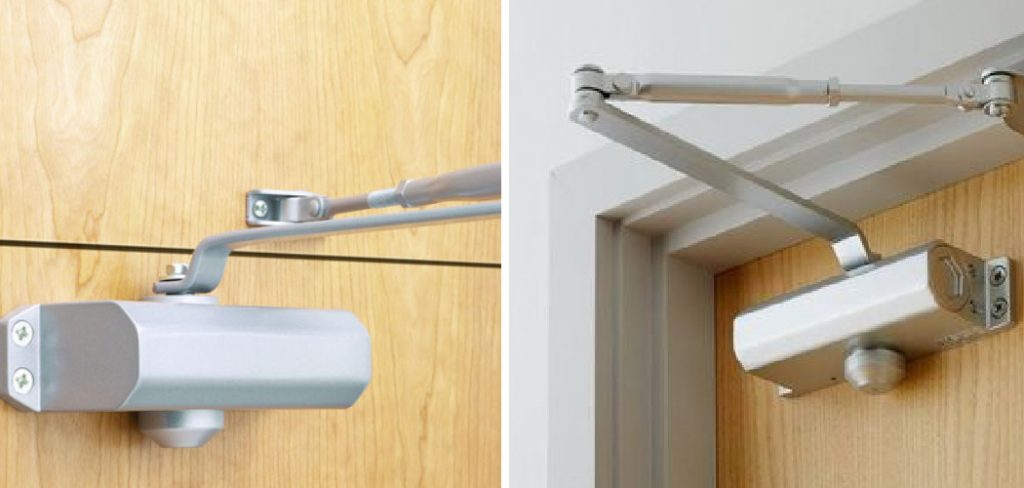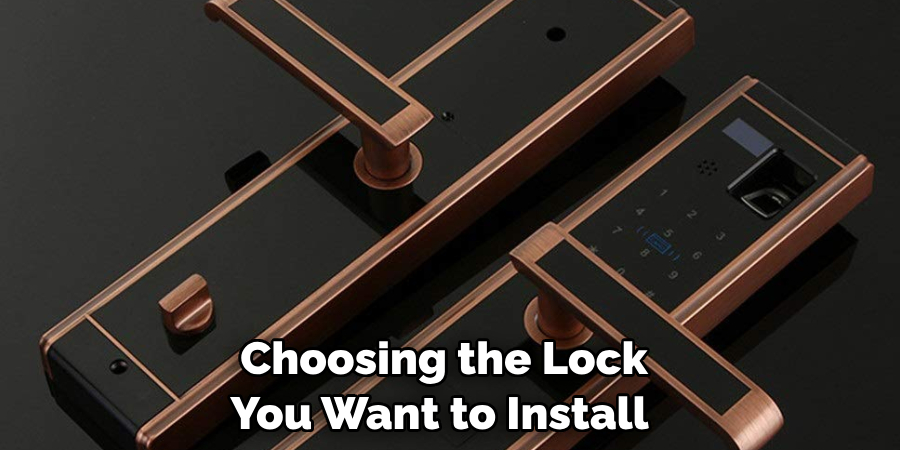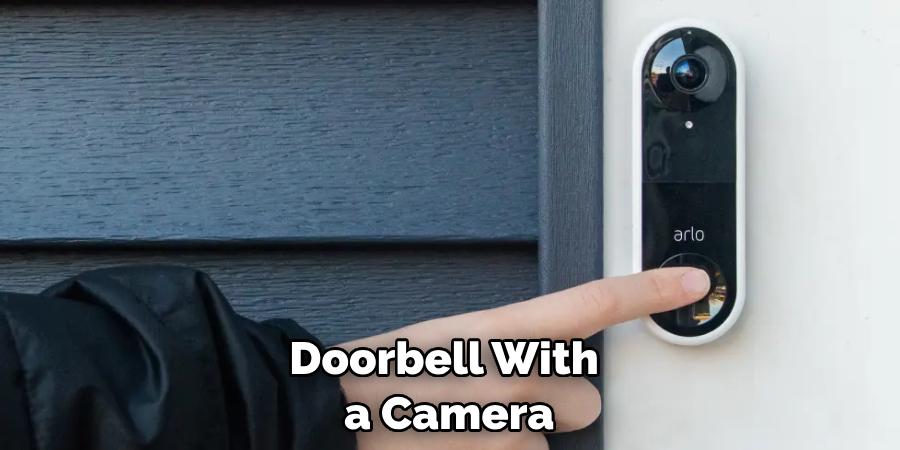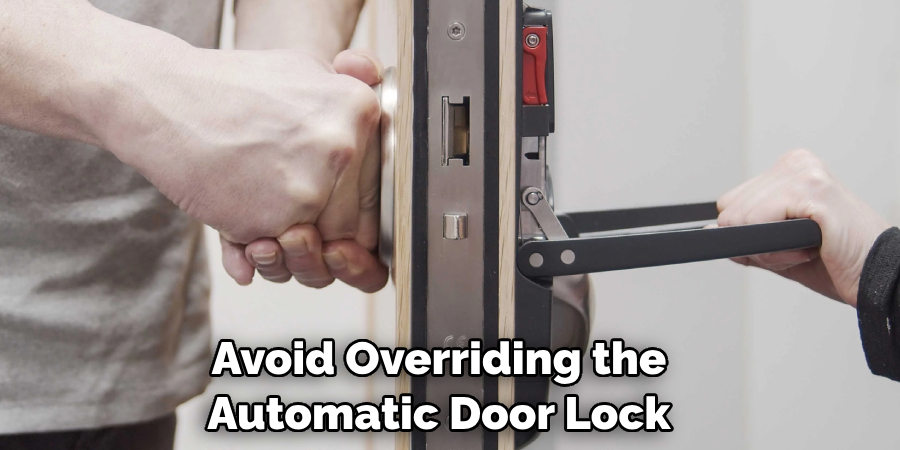Making sure your home is safe and secure should be a priority for any homeowner. One way to do that is by locking automatic doors. With the rise of automatic door systems, knowing which type of security system best suits your needs can be difficult.

In this blog post, we will review how you can lock an automatic door to prevent unwanted visitors from entering your house or business. We’ll also look at the different types of locks available and what features are important when choosing one for optimal safety and security.
By the end, you’ll have everything you need to know about how to lock automatic door with the utmost security measures so that both you and your belongings stay safe!
What Will You Need?
To lock an automatic door successfully, you will need the following:
- Automatic Door Lock System: This could be a smart lock, a keypad lock, or even a traditional key-based lock designed for automatic doors.
- Appropriate Tools: The type of tools required will depend on the lock system. These could include a screwdriver, drill, and a tape measure.
- User Manual or Guide: This is crucial for understanding how to install and operate your chosen lock. You might also require the associated mobile app if the lock is smart.
- Security Code or Access Card: For smart locks and some keypad locks, you must set up a security code or have an access card that will allow you to lock and unlock the door.
Remember that the specific items you will need can vary depending on the type of lock system you’re installing. Always refer to the manufacturer’s instructions for the most accurate information.
10 Easy Steps on How to Lock Automatic Door
Step 1: Choose Your Lock

The first step involves choosing the lock you want to install on your automatic door. This decision should be based on your personal preferences, budget, and the level of security you need. Various types of locks are available in the market, such as smart locks, keypad locks, or traditional key-based locks. Make sure to do thorough research before purchasing one.
Step 2: Gather Your Tools
Once you’ve chosen your lock, the next step is gathering all the necessary installation tools. The tools you’ll need will depend on the type of lock you’ve selected. Common tools include a screwdriver, drill, tape measure, and a utility knife or chisel. Some locks may come with their specific tools, so be sure to check the packaging and user manual.
Step 3: Prepare the Door
The third step in locking an automatic door involves preparing the door for installation. This may include removing any existing locks or hardware from the door. Ensure the door area where the new lock is installed is clean and clear of any debris. Use your tape measure to mark the correct spot where the lock will be placed. Always follow the manufacturer’s instructions to prepare the door correctly for your specific lock.
Step 4: Install the Lock
This step involves actually installing the lock onto your automatic door. Start by holding the lock against the door where you’ve marked it to be placed. Using your tools, secure the lock into position according to the manufacturer’s instructions.

If it’s a smart lock or keypad lock, you’ll also need to install the electronic components, which may involve wiring. Take careful note of any specific instructions for this step, as improper installation could result in a lock that doesn’t function correctly or compromises the security of your door.
Step 5: Set Up Your Lock
After the physical installation of the lock, the next step is to set up the system for use. For traditional key-based locks, this involves testing the key in the lock to ensure it works properly. You must set up a unique access code or pair the lock with your mobile device through its associated app for keypad or smart locks. Follow the manufacturer’s instructions closely to set up your lock correctly.
Step 6: Test Your Lock
Now that your lock is set up, it’s crucial to test its functionality thoroughly. If you’re using a key-based lock, try locking and unlocking the door multiple times with the key. For keypad locks, enter your code to lock and unlock the door, and try to enter the wrong code to ensure the security function is working correctly. For smart locks, use the app to lock and unlock the door and check the notifications and other features to ensure they’re working properly.
Step 7: Secure Your Access Code
It’s important to secure your access code or key card for smart and keypad locks. Only share this information with people you trust fully. Regularly change the code to ensure security. Some smart locks allow for temporary codes to be created for guests, which expire after a set amount of time. Use this feature instead of sharing your main code. If you’re using a key card, ensure you have a secure place to keep it where it won’t get lost or stolen.
Step 8: Regularly Check and Maintain Your Lock
Regular maintenance is key to ensuring your automatic door lock functions effectively. Check the lock’s battery level regularly (if applicable), and ensure it’s replaced before it runs out.
Keep the lock clean and free from dust or grime. If your lock isn’t working correctly, it’s best to call a professional rather than attempt to fix it yourself, as you could inadvertently damage the lock mechanism.
Step 9: Consider Additional Security Measures

While a good lock is an important part of home or business security, it’s also worth considering additional measures. This could include a security alarm, CCTV cameras, or a doorbell with a camera. These measures can provide an extra layer of security and peace of mind.
Step 10: Teach Others How to Use the Lock
If other people will be using the lock, such as family members or employees, make sure they know how to use it correctly. This includes locking the door every time they leave, not sharing the access code or key card with anyone, and understanding the importance of keeping the door locked for security purposes. Remember, a lock is only effective if it’s used properly.
You can install and secure an automatic door lock by following the steps listed here. With the right type of lock and a few simple steps, you can keep your home or business safe and secure.
5 Additional Tips and Tricks
- Check if the door has a manual override lock. These are usually located on the side of the door and can be used to open and close your automatic door in emergencies.
- Ensure your remote control is compatible with your door’s make and model. This will ensure that you get the most out of using an automatic door-locking system, as incompatible remotes may not be able to activate the system.
- Consider installing a keypad entry system if you want an extra layer of security for your automatic door locks.
- If you need assistance, don’t hesitate to contact an expert in installing or troubleshooting automatic door locks. This will ensure that your door is properly installed and working correctly.
- Make sure to regularly check the batteries in your remote control and replace them when necessary.
When dealing with automatic door locks, make sure to keep these tips in mind. Doing so will ensure you get the most out of your system and stay safe. If you ever need help installing or repairing your automatic door lock, don’t hesitate to call a professional!
5 Things You Should Avoid

- Avoid overriding the automatic door lock with an incompatible remote. Not all remotes can activate the system, and using an incorrect one may damage the door or prevent it from locking properly.
- Never force a keypad entry code into your system; this can cause permanent damage and won’t work anyway if you don’t have access to the correct code.
- Keep your automatic door locks unlocked when you’re away from home. This can pose a risk to your security as it leaves the door vulnerable to anyone with access to the code or a remote control.
- Avoid using low-quality batteries in your remote and keypad entry systems, as these may need more power for the system to work properly.
- Remember to check your door locks and ensure they function correctly regularly. This will help you identify any potential problems before it is too late.
It’s important to follow these guidelines when dealing with automatic door locks to ensure the system works as efficiently and safely as possible.
Conclusion
How to lock automatic door is a great way to feel secure when inside your premises, but it’s important to make sure you follow the correct steps. Whether you use an access code, keypad entry, or a combination of both, always be aware of who has access to your property. Make sure to take the necessary time and precautions when setting up locks and that they work correctly before leaving the building.
With the right information and preparations, you can ensure your automatic door locking system will keep you safe and secure for years.
Hopefully, this guide has given you the knowledge and confidence to choose and correctly set up your automatic door locking system. Please contact a professional for advice if you have any questions or need help with the process. Happy locking!
About
Safety Fic is a distinguished figure in the world of Diy design, with a decade of expertise creating innovative and sustainable Diy solutions. His professional focus lies in merging traditional craftsmanship with modern manufacturing techniques, fostering designs that are both practical and environmentally conscious. As the author of diy, Safety Fic delves into the art and science of Safety Fic-making, inspiring artisans and industry professionals alike.
Education RMIT University
(Melbourne, Australia) Associate Degree in Design (Safety Fic) Focus on sustainable design, industry-driven projects, and practical craftsmanship. Gained hands-on experience with traditional and digital manufacturing tools, such as CAD and CNC software.
Nottingham Trent University
(United Kingdom) Bachelor’s in diyfastly.com and Product Design (Honors) Specialized in product design with a focus on blending creativity with production techniques. Participated in industry projects, working with companies like John Lewis and Vitsoe to gain real-world insights.
Publications and Impact
In diy, Safety Fic his insights on indoor design processes, materials, and strategies for efficient production. His writing bridges the gap between artisan knowledge and modern industry needs, making it a must-read for both budding designers and seasoned professionals.
